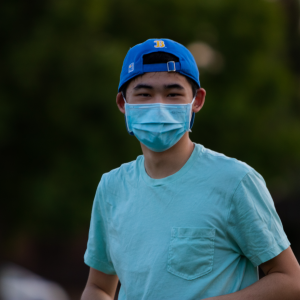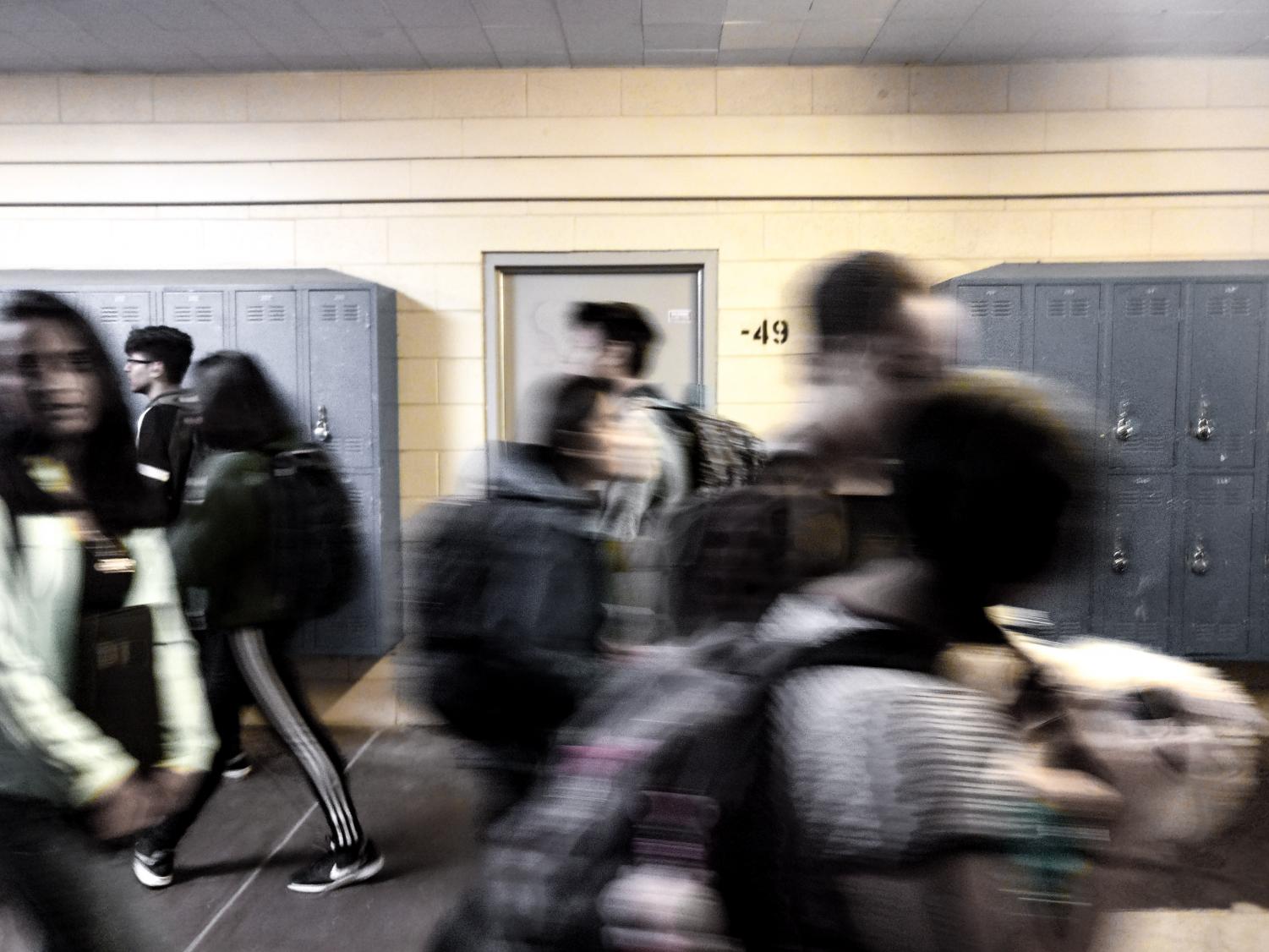Dumping Depression with Wellness Centers
October 23, 2019
Irvington plans to open a new wellness center in late October to address students’ mental health, but will it be enough to make a difference? Read two opposing takes on the center’s effectiveness towards students.
Get Well with Wellness Centers
Irvington High School is opening a new wellness center by the end of October to improve mental health and help students cope with stress. This is reflective of a 2018 study conducted by Dr. Stuart Slavin on Irvington students, which found that 54% of students showed moderate to severe symptoms of depression and 80% showed moderate to severe symptoms of anxiety. The purpose of the wellness center is to be a place where students can decompress and regather themselves in a comfortable, relaxing environment. The role of the center is to provide destressing, relaxing resources such as hot tea and coloring books. Hopes are that in this way, students can have an on-campus place to go to when they need to decompress. The wellness center, by giving students a haven to fall back upon when overloaded, provides Irvington students with a safe space to alleviate stress and improve mental health. Despite some people saying that the wellness center does not have a wide reach and that it won’t be effective because of Irvington’s toxic academic-focused culture, the wellness center can become an important piece of the solution in the future when more services are implemented, and the center and other services could work together to become the overall solution.
The need for a solution to the widespread mental health problem cannot be ignored, and the establishment of this center, to provide students with a space where students can decompress and gather themselves up before moving on, is a step in the right direction. According to a 2013 study conducted in the United States, students reported that they felt more stress than is healthy, and a comparison between data from adolescents and adults shows that teens feel more stress than adults do. This is especially applicable to Irvington, where there is a toxic overachieving culture. Many students take over 3 APs and take on other extracurriculars as well in order to better their college apps.
The center has the potential to become an effective destressing resource for students at Irvington. One key advantage the wellness center has over existing mental health resources on campus is its unique staffing. The majority of the wellness center’s staff is going to be comprised not of teachers but volunteer students. The nature of this staff may improve the destressing environment of the center. In a 2015 study conducted in the northeast United States, 70% of students cited friends as the greatest source of support. Having fellow students working in the wellness center may have the same effect and help to reduce stress. In any environment, familiarity is a big factor in making a student feel at home, and seeing peers of the same age group may help to ease the tension of being in a wellness center.
Some argue that the wellness center will not be able to reach many students, but previous examples refute this claim. Irvington’s wellness center is heavily influenced by other high school wellness centers, such as Gunn High’s and Palo Alto High’s, which have been effective in reaching large numbers of students. According to Palo Alto Online, approximately 1,200 out of the 4,000 students that attend Gunn and Palo Alto have received treatment from their wellness centers in the first three months of their existence. Irvington’s wellness center is based on these two centers, so it is reasonable to assume that Irvington’s center is capable of reaching out to just as many people.
Coping with stress is tough, especially without support. For students, knowing that there is a place in the school that they can fall back upon when they need to step away for a moment is critical in allowing Irvington students to have healthy minds. The wellness center could serve as that important fall-back location. It could act as a home base for students and improve the relationship between the student and the school.
While some have argued that the implementation of a wellness center may not be effective at alleviating school-wide mental illness, the point of the wellness center is not to address all mental illnesses, but to relieve students of stress and provide them with a place to relax and take a break from schoolwork. If publicized well and utilized by students, the wellness center could be an important step towards alleviating the school’s widespread mental illness. When more and more mental illness services develop, the wellness center could be amongst the keystones that make up the overall solution.

An Ill-Advised Remedy for Mental Health
85% of Irvington students suffer from moderate to severe anxiety. 61% suffer from moderate to severe depression. A recent study conducted during the 2018-2019 school year by Dr. Stuart Slavin has shown that Irvington High School suffers from a systemic mental health crisis, and our school administration is scrambling to try to find solutions. One of these solutions is a new wellness center located in Room 49, a place where students can destress and seek therapy during school hours. While Irvington’s new wellness center makes strides in addressing mental health problems on campus, its resources fall short in addressing the root causes of the crisis: a lack of mental health interventions that reach the whole school, and the competitive, academics-focused mindset of Irvington students.
The wellness center should be commended for opening up access to mental health resources to students, but it faces obstacles in reaching the entire student body. At the moment, the Wellness Center is planned to be a place to simply relax and decompress, with volunteer counselors available for further help when available. According to the American Institutes for Research, the wellness center can be considered a “Tier 2 Intervention,” meaning that the center provides targeted intervention to a narrow scope of students who ask or are referred for help. However, the stigma surrounding mental health prevents most students who need assistance from seeking it out, with a recent study conducted by community nonprofit Mental Health America finding that a mere 28.2 percent of students suffering from depression receive consistent treatment. If students are unable to overcome the social stigma surrounding mental health treatment, then how will the wellness center help intervene and prevent a deepening crisis?
Teacher referrals present a promising means to increase utilization of the wellness center, but this medium also faces obstacles to be effective. While teachers are encouraged to refer students to the wellness center if they feel something is off, Irvington High School teachers receive zero formal training in mental health. If students are unable to overcome the social stigma surrounding mental health, and if teachers are forced to guess if a student is suffering from a mental breakdown, how will the wellness center help intervene and prevent a deepening crisis?
To solve some of these issues, the mental health center should rebrand itself as a one-stop-shop for all of Irvington students’ needs. In the short term, school admin should consider integrating the wellness center with our existing academic counselors, school nurses, and school psychologists. By doing so, students will see the center as not one for mental health, but one for general academic and health needs. The school should also consider integrating the destressing aspect of the wellness center into the school library instead of in the middle of a high foot traffic hallway to allow students to access the center more discreetly. Nonetheless, as is, the wellness center will only be able to reach a specific subset of Irvington High School and do little to relieve the mental health crisis on campus.
Even if all of the above is properly implemented by the Irvington school admin, drastic change dealing with mental health will require a major shift in student culture to come to fruition. Studies by the National Institutes of Health find that school culture is heavily correlated with mental health, and while Irvington High School’s school culture is by no means the worst in the country, it still is flawed. Irvington students have the mindset of taking as many rigorous classes as they can, often taking as many as four or five AP classes during a school year. While counselors could theoretically block these requests, Irvington counselors are unwillingly complicit in giving students rigorous schedules, fearing backlash from parents who demand that their students be able to take whatever classes they please. Furthermore, Irvington teachers often disregard the number of rigorous classes a student takes and set overly strict standards for their students that greatly exceed what is needed for a deep understanding of the material. As a result, students suffer, realizing that they signed up for a schedule that they can not properly manage. Many of these students, however, are peer pressured into continuing with their schedule, knowing that their chance at a good college will decrease if they do not continue.
In this perpetual cycle of harm toward students, change must come from at least one of these stages of the cycle. Students should try to break free from the notion that taking APs will greatly benefit them in getting into college, and realize the impact those classes may have on their GPA if they can not manage those classes well. On the other hand, teachers should be held accountable for their rigid curriculums. Students should be able to submit teacher evaluation forms to school admin to be accounted for in teachers’ evaluations. Teachers should also hold their fellow teachers accountable, and be able to sit in their colleagues’ classes for PLC time to review their curriculums. Finally, while many will protest any notion of restricting the classes students can take, Irvington school admin should consider capping the number of APs and honors classes students can take in high school, but open up AP classes to freshmen and sophomores. By allowing students to spread out the rigorous classes over four years, students will be able to breathe a bit easier later on in high school. And since most colleges cap the amount of credit students are granted from AP classes, most students won’t be affected greatly by these caps.
Supporters of the wellness center initiative may cry that any action is better than no action, but these critics fail to consider the broader mental health needs at Irvington. For a more effective mental health program, Irvington school admin should focus their efforts on implementing “Tier 1 interventions” that can reach the whole school. Sure, these interventions may be broader and have less depth to them than something a targeted intervention could provide. But these interventions ensure that prevention is the key focus, reaching the entire school instead of that minority of students who seek out help. Starting even with as simple as formal teacher training for mental health would allow teachers to more confidently refer students in distress. Providing universal mental health education instead of a three week unit in health will allow students to self-identify symptoms in themselves and their peers, and break the stigma students have toward mental health. These broad, preventative actions ensure that every student and teacher is armed with the necessary resources to react to a mental health crisis.
And that’s not to say the wellness center has no place at Irvington. An effective mental health intervention program relies on having robust interventions for everyone, from the individual student to the entire student body. But with a lack of effective programs in any type of intervention, the mental health crisis will deepen at any school campus. Current strides taken by Irvington High School to try to solve the mental health crisis on campus are commended, but more must be done to prevent the problem from occurring in the first place if any solution is to be worthwhile. Change both in our student culture and in the way the mental health problem is approached by our school admin will be needed if Irvington’s wellness center is to be effective in the fight against this issue.


